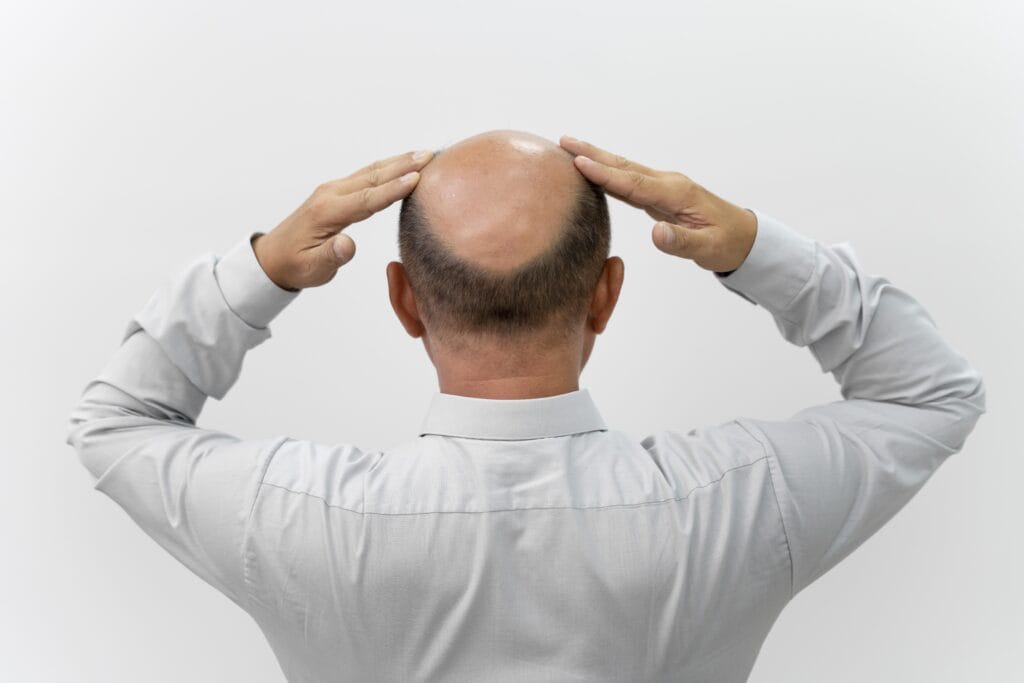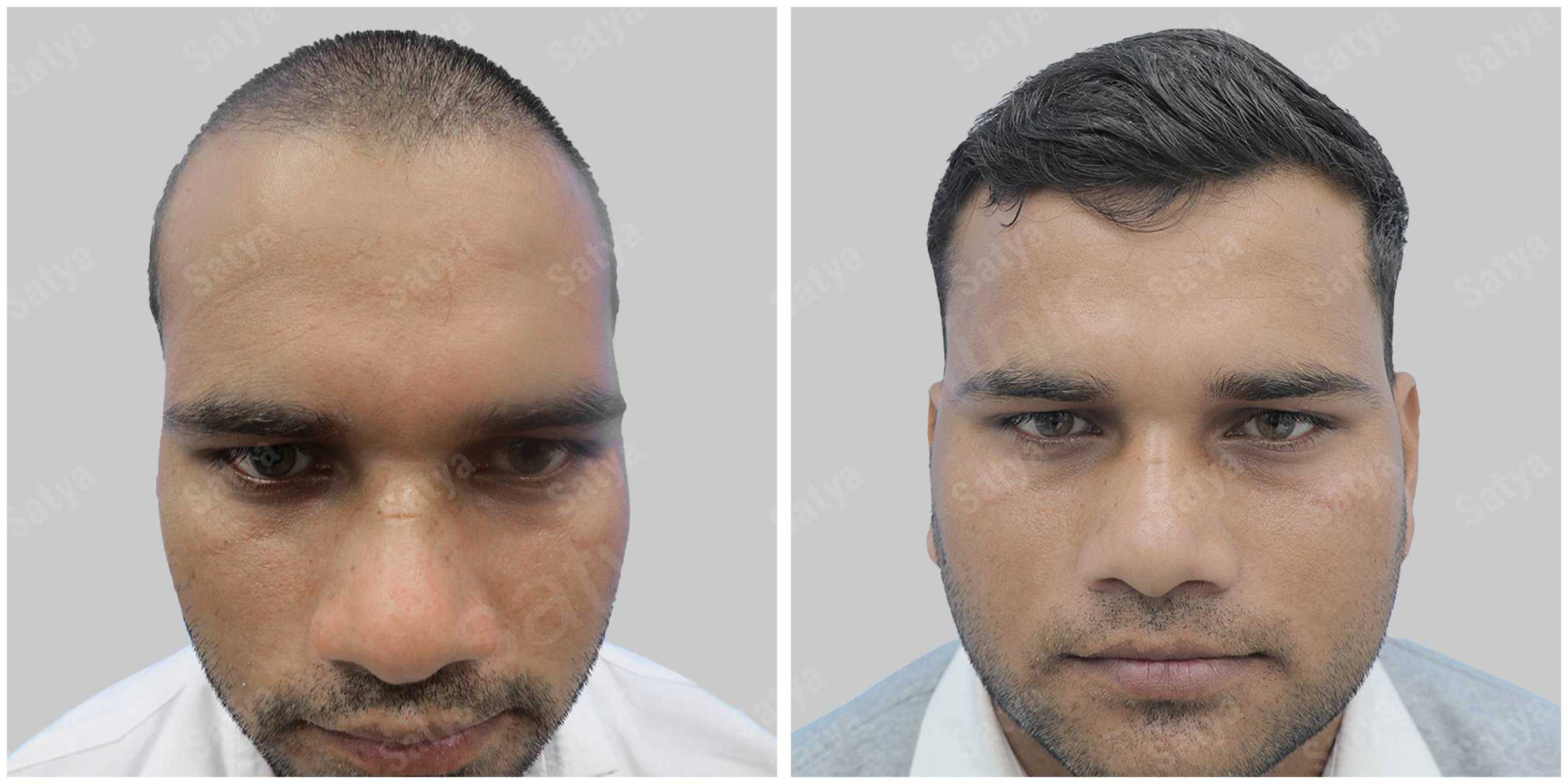Worldwide, androgenic alopecia is a congenital disorder that causes hair loss in both men and women. It may show up as female pattern hair loss or, less frequently, as male pattern baldness.
Although female pattern baldness is uncommon, both sexes can eventually experience balding, hair loss, and thinning due to this hereditary and hormonally induced disorder. In most cases, it manifests as a diffuse thinning over the crown in both men and women, or as a receding hairline in men. We’ll examine the subject of male hair loss in this blog article and provide some solutions.
Which Types of Hair Loss Are There?
Cicatricial alopecia and non-cicatricial alopecia are the two primary forms of hair loss. Permanent hair loss results from the transplantation of damaged follicles with fibrotic scar tissue in cicatricial alopecia. Primary cicatricial alopecia and secondary cicatricial alopecia are the two types into which it falls.
However, non-cicatricial alopecia is a potentially reversible alopecia marked by retained hair follicles and a changed hair cycle. They are separated into diffuse and localized alopecia. Diffuse alopecia often includes male pattern baldness or androgenic alopecia
.
Types of diffuse alopecia commonly include:
Androgenic alopecia:
Usually, this kind of baldness appears when the hair follicle decreases. For both men and women, it is the most prevalent kind of hair loss.
Diffuse alopecia areata:
This autoimmune disease, which results in hair loss from the head to the body, is the second most prevalent kind of non-cicatricial alopecia.
Telogen effluvium:
This form of hair loss may be brought on by hormonal fluctuations or the negative consequences of severe physical and mental stress. People may have a sudden receding hairline and hair loss.
Anagen effluvium:
Complex medical treatments such as chemotherapy, inflammation, etc., are the cause of this kind of hair loss.

What Phases Does Male Pattern Baldness Go Through?
Male pattern baldness has 7 phases, similarly to the Norwood scale, which is used by clinicians to categorize hair loss. Additionally, these phases emphasize the signs of androgenic alopecia:
Phase 1: At this point, there is no clue of baldness. Your hairline does not necessarily signify a recession, it might be naturally high or low.
Phase 2: The temples have a little 1 to 2 cm recession.
Phase 3: A “M” or “U”-shaped hairline grows. The frontal hairline slowly recedes, or a bald area gradually opens up in the middle of the head.
Phase 4: Almost all of the hair on the top of the head is lost, except a visible hairline on the temples.
Phase 5: The hairline recession is still there, with the exception of the back and sides.
Phase 6: A cluster of hair connects the side to the back, and the hair has fully receded on the top of the head.
Phase7: A full bald patch appears on top of the head, frequently, only a thin hairline extending from the side to the rear of the head may be seen.
What Are the Reasons Behind Pattern Baldness in Men?
Genetic Tendency:
There is a significant hereditary component to androgenetic alopecia that is passed down to subsequent generations. The X-chromosome’s androgen receptor gene is thought to be a likely candidate gene for male pattern baldness due to the phenotype’s androgen dependence.
Hormonal Alterations:
Hormones may significantly influence the onset of androgenic alopecia. Dihydrotestosterone, which is produced from testosterone by the enzyme 5-alpha reductase, causes the hair follicle to shrink.
Age:
Male pattern baldness is more common as people age, mostly affecting elderly persons. Several factors, including geography, environment, society, and health cause changes in the age range of male pattern baldness incidence.
What Are the Male Pattern Baldness Treatment Possibilities?
Minoxidil:
Using topical or oral minoxidil to the hair follicles might improve blood flow. It is anticipated that it will encourage hair development and stimulate hair follicles. An anti-androgenic effect has also been discovered by recent study.
Finasteride:
This drug stop the conversion of testosterone to dihydrotestosterone (DHT) since it is a type II 5α-reductase inhibitor. By inhibiting the production of DHT, finasteride lowers DHT levels in the scalp, which can slow down the pace of hair loss and promote hair growth in MPB patients.
Platelet-rich plasma (PRP):
By promoting the proliferation of dermal papilla cells, PRP has the potential to decrease hair loss. Moreover, it promotes blood flow in hair follicles and has anti-inflammatory qualities for the scalp.
To schedule a hair transplant in Delhi or if you have any inquiries, use the number or email provided. To learn more about our services and patient testimonials, please visit our website.
Book an appointment
Consultation

Repair

Blog

Galleries









